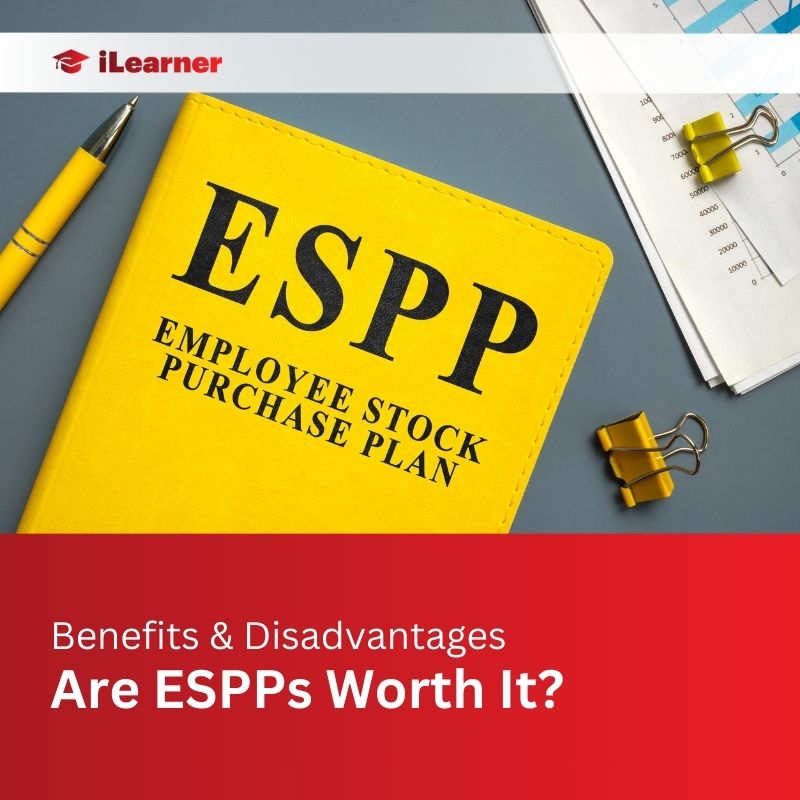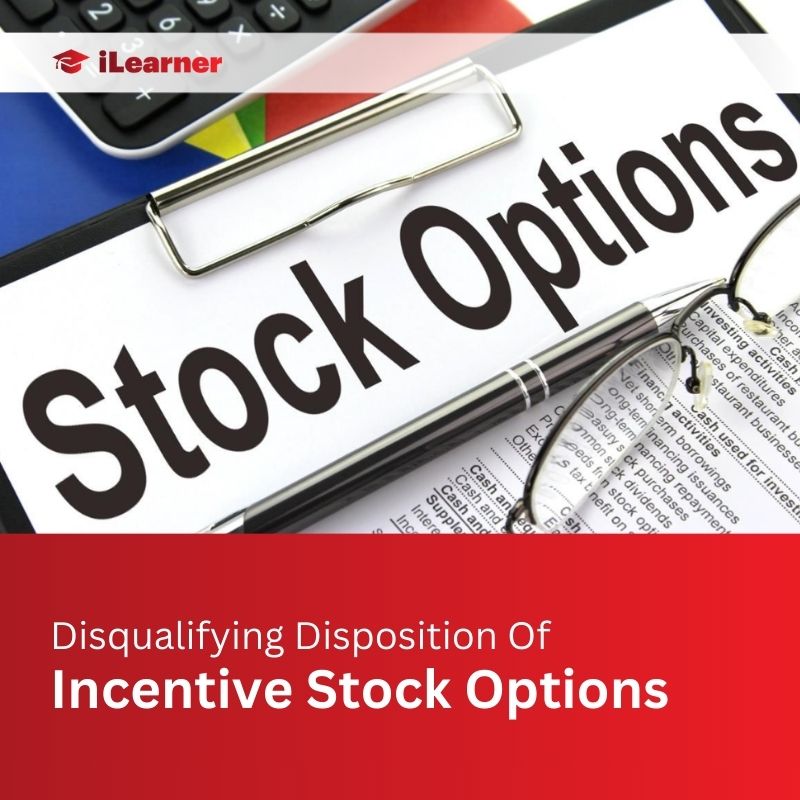Employee Stock Purchase Plans (ESPPs) offer a unique financial avenue for employees in publicly traded companies, allowing them to acquire company shares at a discounted rate.
This enticing benefit aims to foster a sense of ownership, commitment, and financial prosperity among employees, presenting both opportunities and challenges for employers and participants alike.
In this guide, we will unravel the intricacies of ESPPs, exploring their tax implications, advantages, disadvantages, and best practices to empower individuals and organizations to make well-informed decisions in the realm of employee stock ownership.
What is an ESPP?
An Employee Stock Purchase Plan (ESPP) is a standout employee benefit, particularly in publicly traded companies. It opens a unique avenue for employees to purchase shares of their company’s stock at a discounted rate, often around 15%.
This opportunity usually spans a 12-month offering period, allowing participating employees to allocate up to 15% or $25,000 per annum of their salary towards acquiring these discounted company shares.
Qualified and Nonqualified ESPP
Diving deeper, it’s crucial to distinguish between the two main types of ESPPs: qualified and nonqualified. A qualified ESPP brings potential tax advantages, allowing employees to defer income tax until they decide to sell the stock. Conversely, nonqualified ESPPs lack the same tax benefits.
How is an ESPP taxed?
Understanding the tax implications of ESPPs is pivotal. ESPP shares operate on a post-tax basis, implying that these shares are purchased using already taxed income. The tax event occurs when the ESPP shares are eventually sold. Opting for an immediate sale results in income tax on the 15% discount, treated as compensation.
For those aiming for the coveted long-term capital gains tax treatment, holding the shares for more than two years from the offering period start and one year after the purchase date is imperative.
Advantages and Disadvantages to Employers?
Benefits of ESPP for Employers
ESPPs strategically benefit employers by fostering a sense of ownership and commitment among employees. Beyond this, it can potentially elevate overall productivity. Offering an ESPP can also enhance the company’s allure, especially when competing for top talent during recruitment.
Cons of ESPP for Employers
Like any investment, ESPPs demand attention. Administrative efforts are required to keep the program running smoothly. Moreover, if the company’s stock underperforms, it may result in employee dissatisfaction as the perceived value of their investment diminishes.
Advantages and Disadvantages of ESPP for employees?
ESPP benefits for employees
For employees, ESPPs unfold as a golden opportunity. The chance to acquire company shares at a discounted rate, usually around 15%, provides an immediate and tangible return on investment. When multiplied over a prolonged career, this benefit can accumulate into a significant financial gain.
Cons of ESPP for employees
Yet, as with any investment, risks are omnipresent. The value of ESPP shares can experience a downturn, leading to potential losses. The caution here is that investing a substantial portion of one’s wealth in the employer’s stock can pose a risk, particularly if the company’s performance takes an unexpected hit.
Determining the worth of an ESPP is a nuanced process that involves closely examining individual financial situations. Highly compensated employees, who might already possess a substantial amount of company stock, need to delicately balance their participation in ESPPs with other investment strategies and tax-advantaged accounts.
ESPP in Conjunction With Other Saving Opportunities
Finding the right balance is key. Highly compensated employees often have access to various tax-advantaged accounts, such as retirement plans, Healthcare Savings Accounts, or Deferred Compensation plans, each potentially offering better long-term tax advantages compared to ESPPs.
Evaluating Your ESPP
Deciding on ESPP participation and contribution is a multi-faceted process. Factors like investment goals, tax implications, budget constraints, and risk tolerance should all be considered. Seeking professional financial advice can be invaluable in making well-informed decisions tailored to your unique financial landscape.
Can You Lose Money on an ESPP?
ESPPs, despite their advantages, carry risks. A sudden drop in stock value, even if it’s just 15%, can negate the gains received through the plan. It’s imperative to comprehend the potential for loss and incorporate robust risk management into your overall financial strategy.
Should You Participate? How Much Should You Contribute?
The decision to participate and contribute to an ESPP is contingent upon various factors unique to your financial circumstances. Consider existing investments, risk tolerance, and access to other tax-advantaged accounts. Seeking professional advice can help craft a strategy aligned with your overarching financial goals.
ESPP Best Practices
Employing best practices is essential for maximizing the benefits of an ESPP. A strategic approach involving a cycle of maximum ESPP contributions, simultaneous sales, and intelligent investment of proceeds in tax-advantaged accounts can potentially provide an immediate return on investment, tax deferral, and risk mitigation.
Additional Insights
Delving even further into ESPP intricacies, it’s noteworthy that the structure and functioning of these plans can vary between companies. Some companies may offer a lookback provision, allowing employees to purchase shares based on the lower of the stock price at the beginning or end of the offering period. Understanding such nuances can empower employees to make more strategic decisions regarding when to participate and when to sell.
Another aspect to consider is the impact of ESPP participation on one’s overall investment portfolio. While the allure of discounted company shares is undeniable, it’s crucial to maintain a diversified investment strategy. Overloading your portfolio with a single stock, even if it’s from your employer, can expose you to undue risks if the company faces challenges.
Moreover, keep a vigilant eye on legislative changes that may affect ESPP taxation. Tax laws are subject to amendments, and staying informed ensures that you adapt your strategy to align with the prevailing regulations.
Lastly, ESPPs offer a unique chance to cultivate a savings habit. By automatically diverting a portion of your salary into the plan, you’re essentially enforcing a disciplined approach to wealth accumulation. This regular saving, coupled with the potential for stock appreciation, can significantly contribute to your long-term financial goals.
In essence, an ESPP is a dynamic financial tool that intertwines with your overall financial landscape. By navigating through its complexities and leveraging its advantages, both employers and employees can forge a path toward financial prosperity.
Conclusion
In conclusion, Employee Stock Purchase Plans are not one-size-fits-all. This guide aims to unravel the complexities surrounding ESPPs, providing both employers and employees with the knowledge to make informed decisions.
Whether you’re considering offering an ESPP or contemplating participation, a thoughtful approach aligned with your overall financial plan is the key to success. Always seek professional financial advice to tailor strategies to your specific situation.
FAQs: Are Employee Stock Purchase Plans Worth It
Q1: What’s an advisable percentage for participating in an employee stock purchase plan?
Determine a suitable percentage within the 5-15% range, aligning with your financial goals and comfort level.
Q2: Is it recommended to immediately sell ESPP shares?
Assess market conditions and personal finances; selling right away can secure profits, but holding may offer tax advantages or potential for higher returns.
Q3: How long is ideal for holding ESPP?
Consider holding for at least a year to qualify for favorable tax treatment; however, the optimal duration depends on individual financial goals and market conditions.
Q4: What occurs with ESPP shares upon leaving the company?
When leaving, ESPP shares typically remain yours; decide whether to sell or hold them, keeping in mind that the process may vary, so refer to your plan’s details for clarity.
Also Read:




